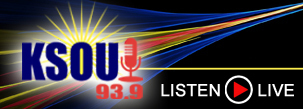Five years ago this week, a devastating derecho blasted across Iowa and several other states, causing catastrophic damage to structures, crops and trees. The Iowa Department of Natural Resources is now offering an interactive map that recounts the damage on August 10th of 2020, and where the recovery stands now.
Ellie Jones is the community disaster recovery coordinator for the D-N-R and Trees Forever Partnership. “It’s more so the replanting and the long-term recovery that we have to do now,” Jones says. “So, it’s like replanting all those seven-million trees that we lost, trying to regrow our canopy to be what it once was, in addition to all the storms that we’re still experiencing and we’re still losing canopy from.”
What’s called a “land hurricane” by some, the derecho raged across 770 miles of the Midwest and lasted for 14 hours. It’s considered the most expensive thunderstorm in American history, with damage in multiple states estimated over 11-billion dollars. Many Iowa communities lost wide swaths of trees, including Cedar Rapids, where up to 65-percent of the canopy was flattened.
Five years later, Jones says the replanting that remains needs to be done with forethought. “The most important thing is to plant diverse trees, because while we are regrowing our canopy, we want to regrow it as diverse as possible,” Jones says. “That way, we give it the best fighting chance against things like pests and disease because we’ve seen in the past that when you plant one of any kind of species and you mainly only plant that, it can cause a lot of problems in the future.”
The D-N-R is urging homeowners and city leaders to plan ahead and consider any of about 85 different species of trees to plant. However, if you’re thinking about maples, think again, as about 35-percent of the state’s trees are already maples. The agency offers a free online publication, called Rethinking Maples, that offers explanations and alternatives.
“In that publication, we breakdown a bunch of different tree species that can be planted in Iowa, and one of the categories that we focus on in there is storm resistance,” Jones says. “So, any tree is going to fail in a storm as intense as that one, but for these less intensive storms, there are trees out there that are more capable of withstanding that damage.”
The D-N-R’s “5 Years of Derecho Recovery” interactive map highlights the impact, response and recovery from the storm, offering stories, maps and videos detailing the damage and the long process of rebuilding.
The storm that moved through northwest Iowa July 28th, bringing with it 99 mph winds, has also now been tagged a derecho.















